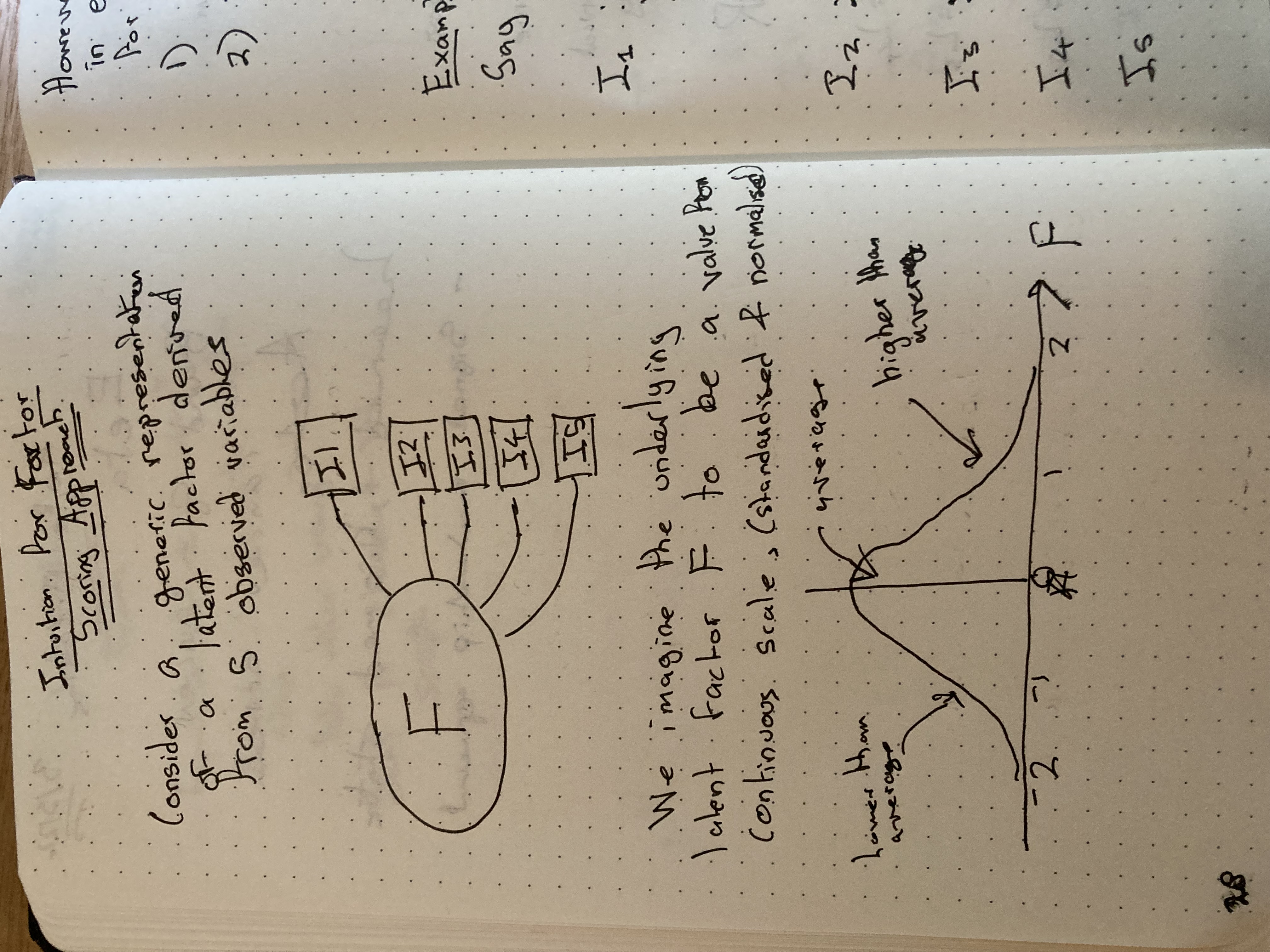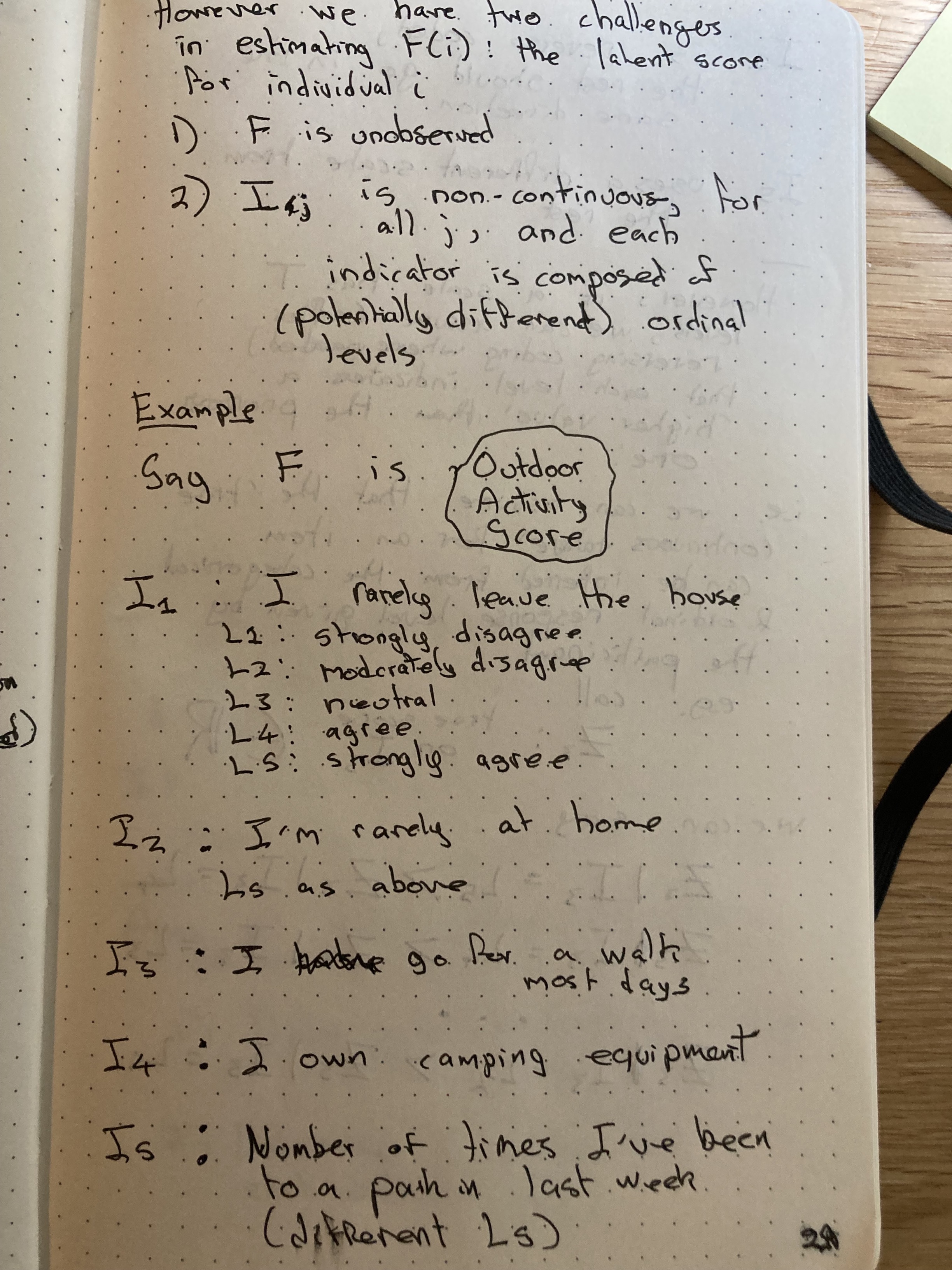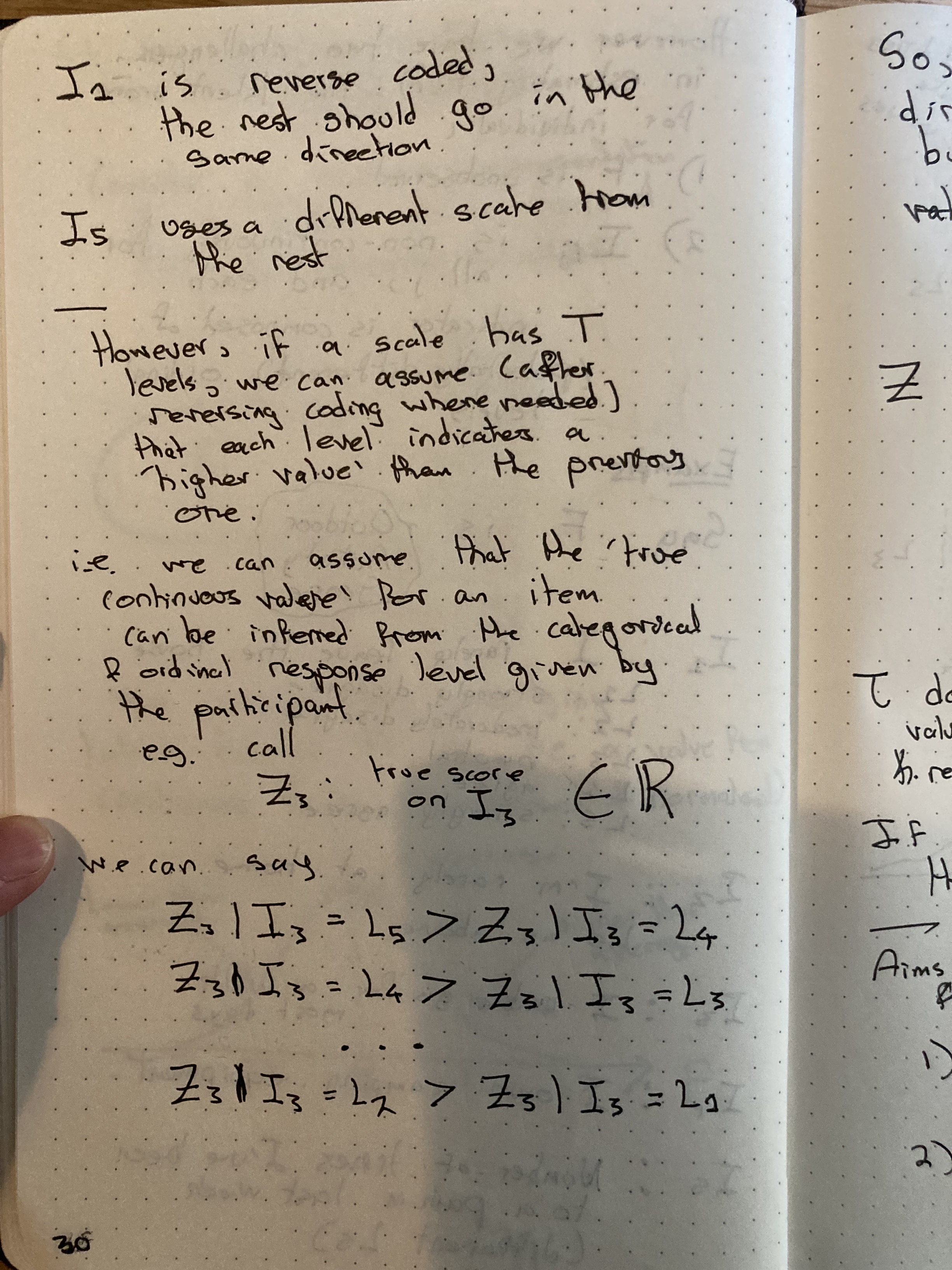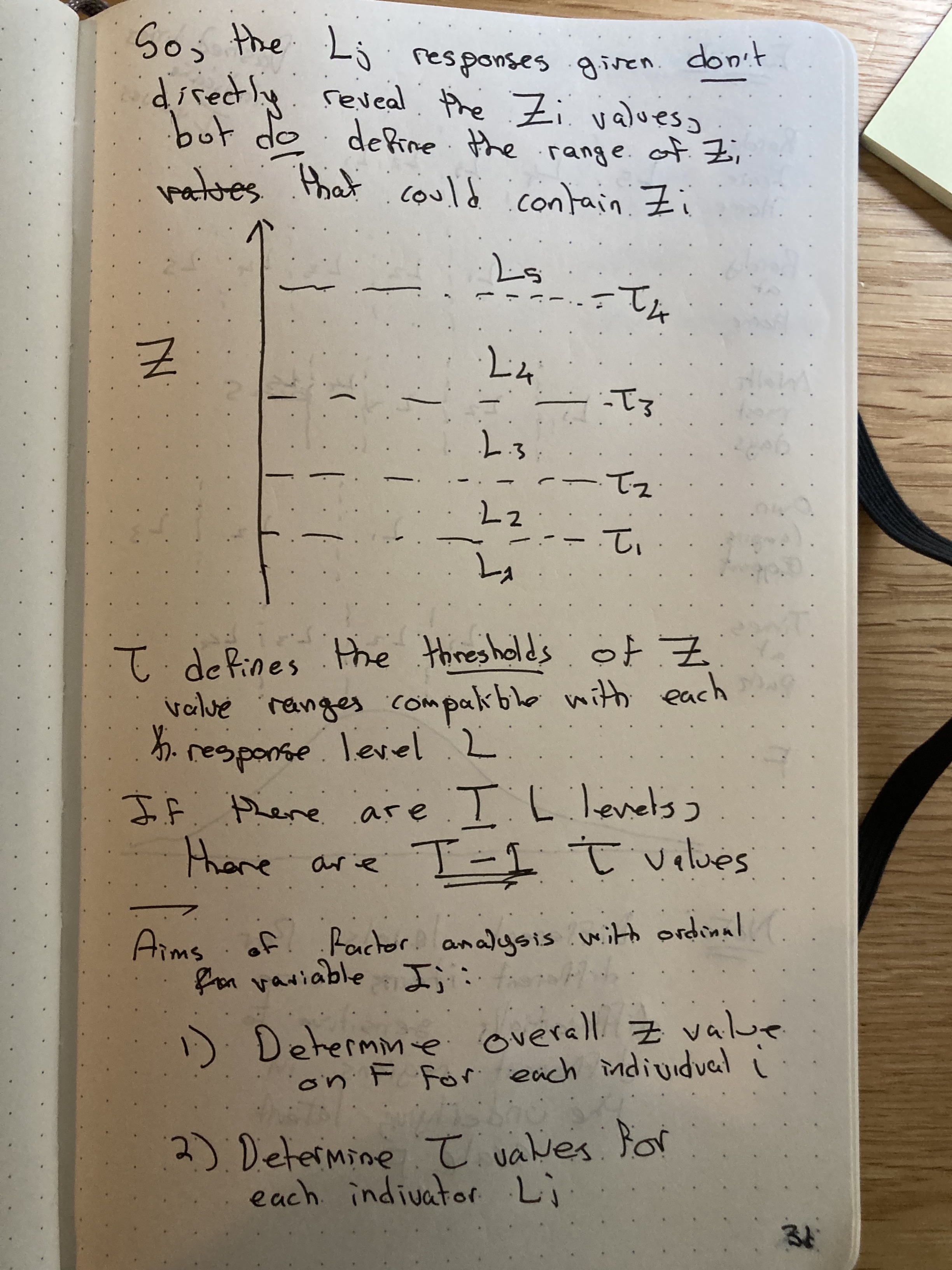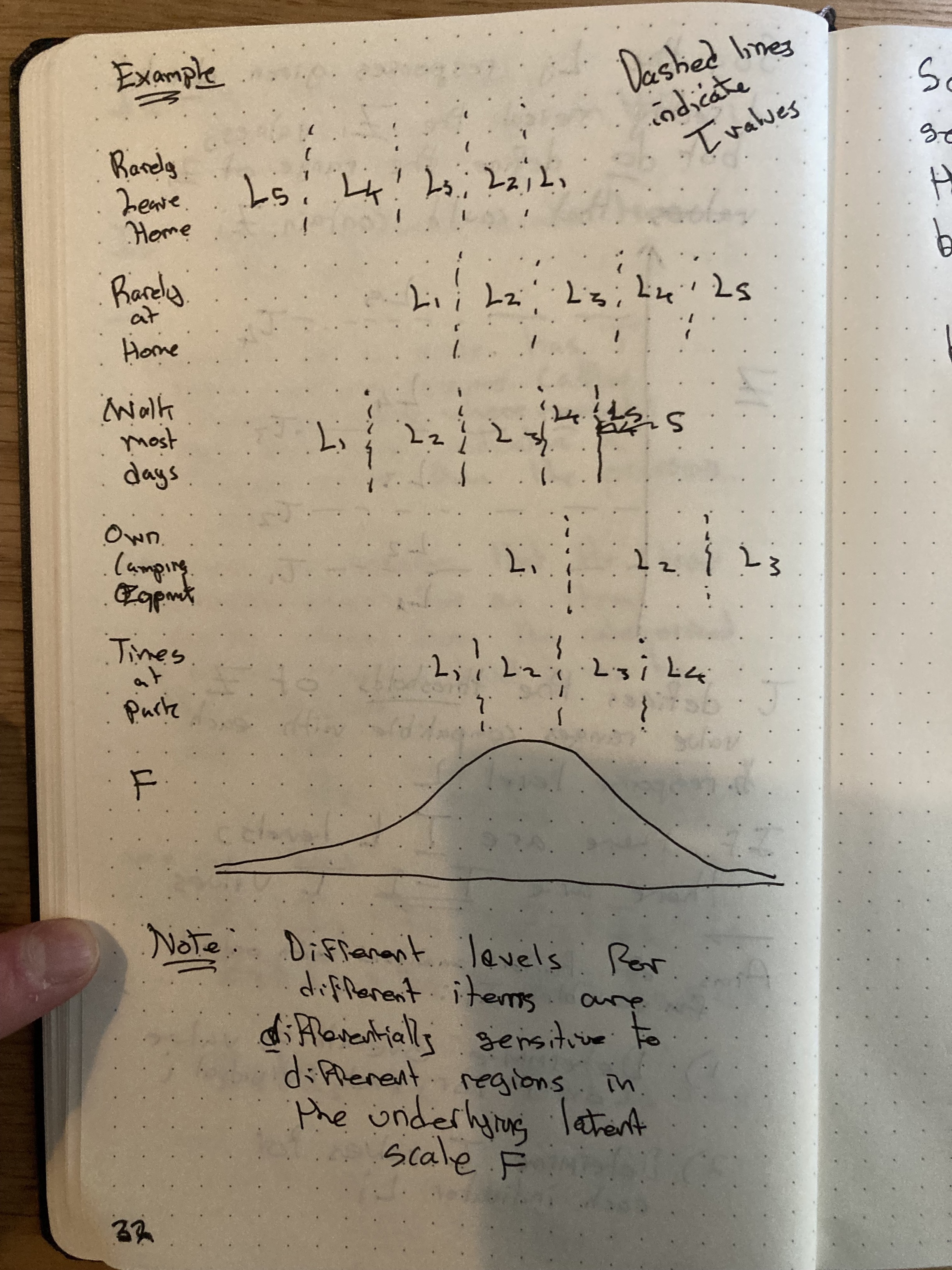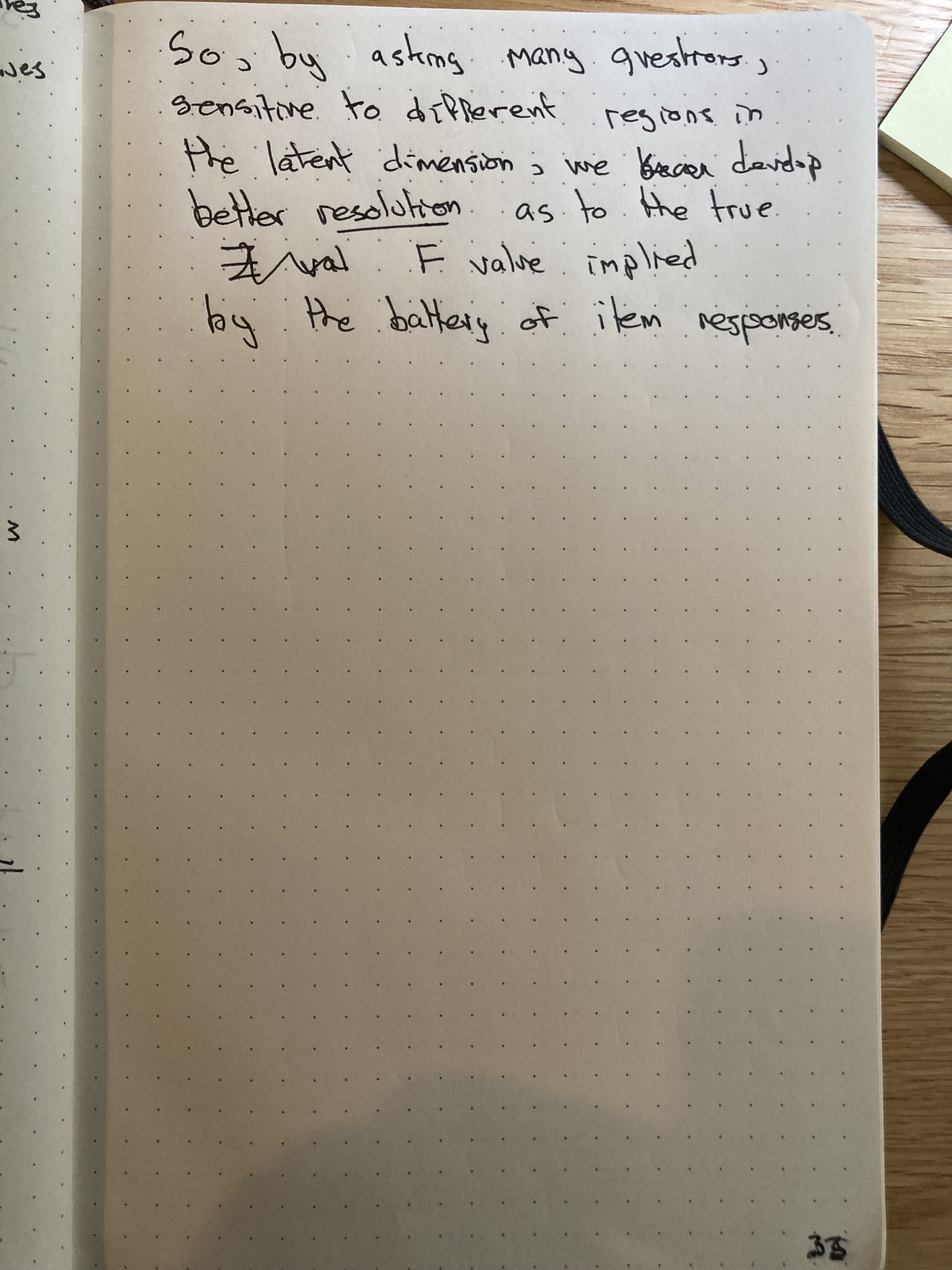For all of the software and tooling available on a computer, sometimes the best way to start thinking and describing complex ideas is with a notepad and pen. No need to think through which graphics software to use: it’s a pen. No need to think about typography and formatting: it’s a pen! Undo buttons? A strike through with a pen. And what if it looks crap? Doesn’t matter. With a pen (and my handwriting) it’s guaranteed to look crap. Just don’t worry about it. Just focus on getting the idea out, from brain to pen to paper.
Recently I’ve been thinking about an application of factor analysis with ordinal variables. With R’s lavaan package, for instance, if the manifest items (rectangles) which go into determining a latent factor (ovals) are ordinal factors, then a method known as polychoric correlation is used. This allows a relaxation of the assumption made implicitly when using ordinal variables, such as those using a Likert scale, which is that each response level is an equal distance apart from the adjacent levels. i.e. something like:
| Response Category | Value |
|---|---|
| Strongly Disagree | -2 |
| Disagree | -1 |
| Neither Disagree nor Agree | 0 |
| Agree | 1 |
| Strongly Agree | 2 |
Instead, with enough good indicators for a latent factor, and enough data, the equal distance assumption can be dropped.
Here’s my handwritten introduction to how:
